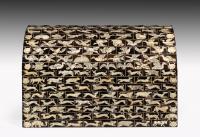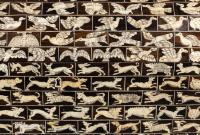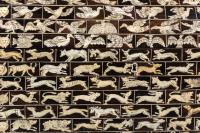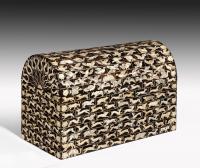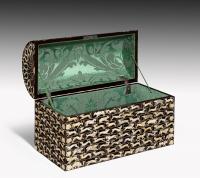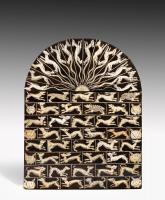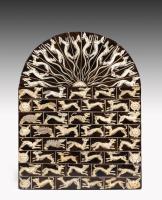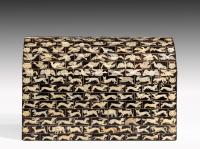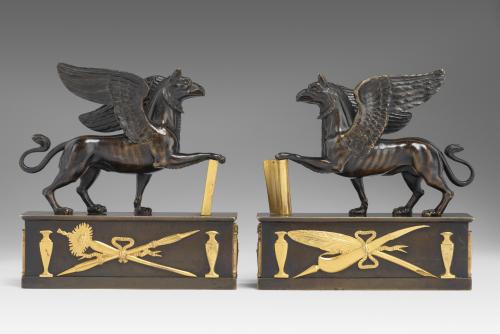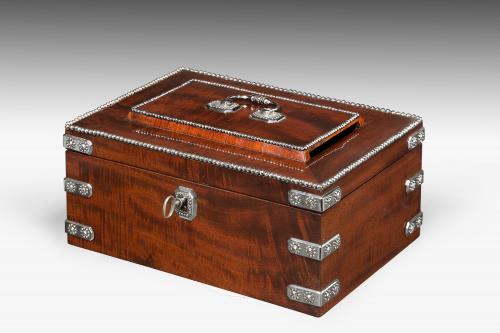
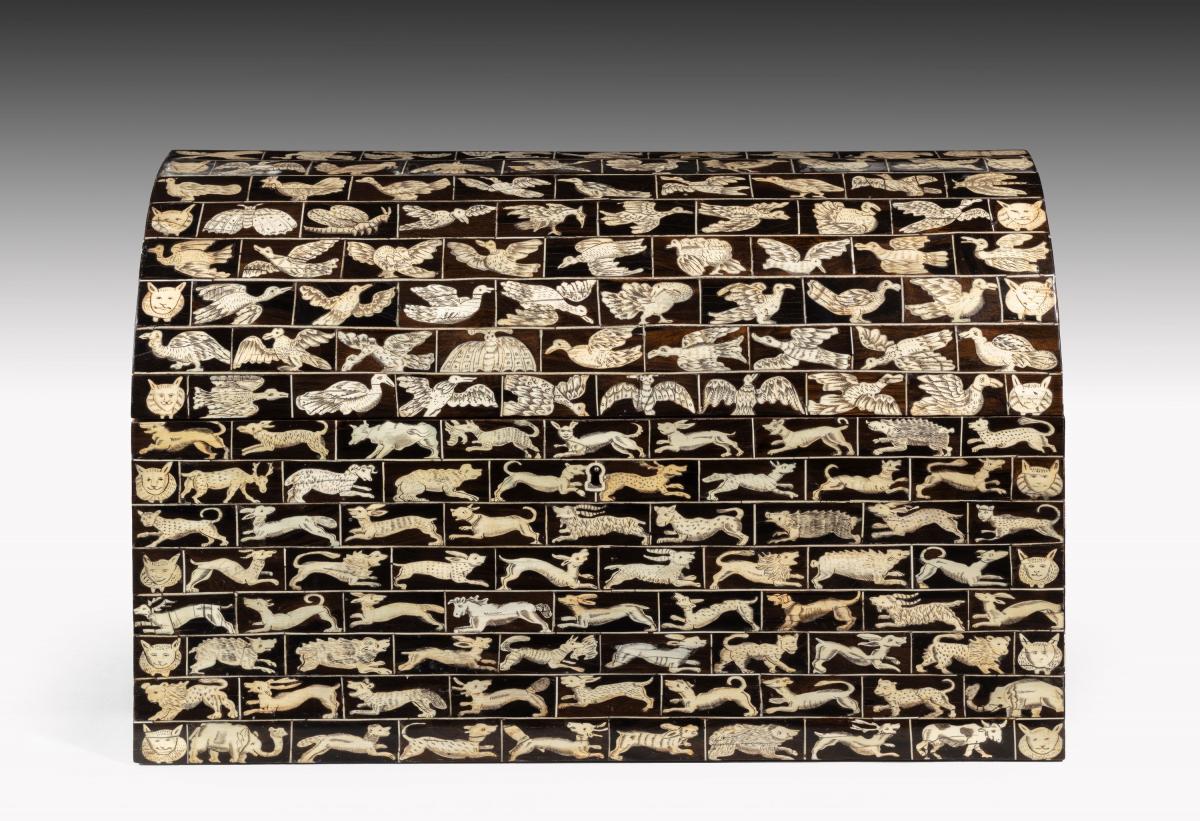
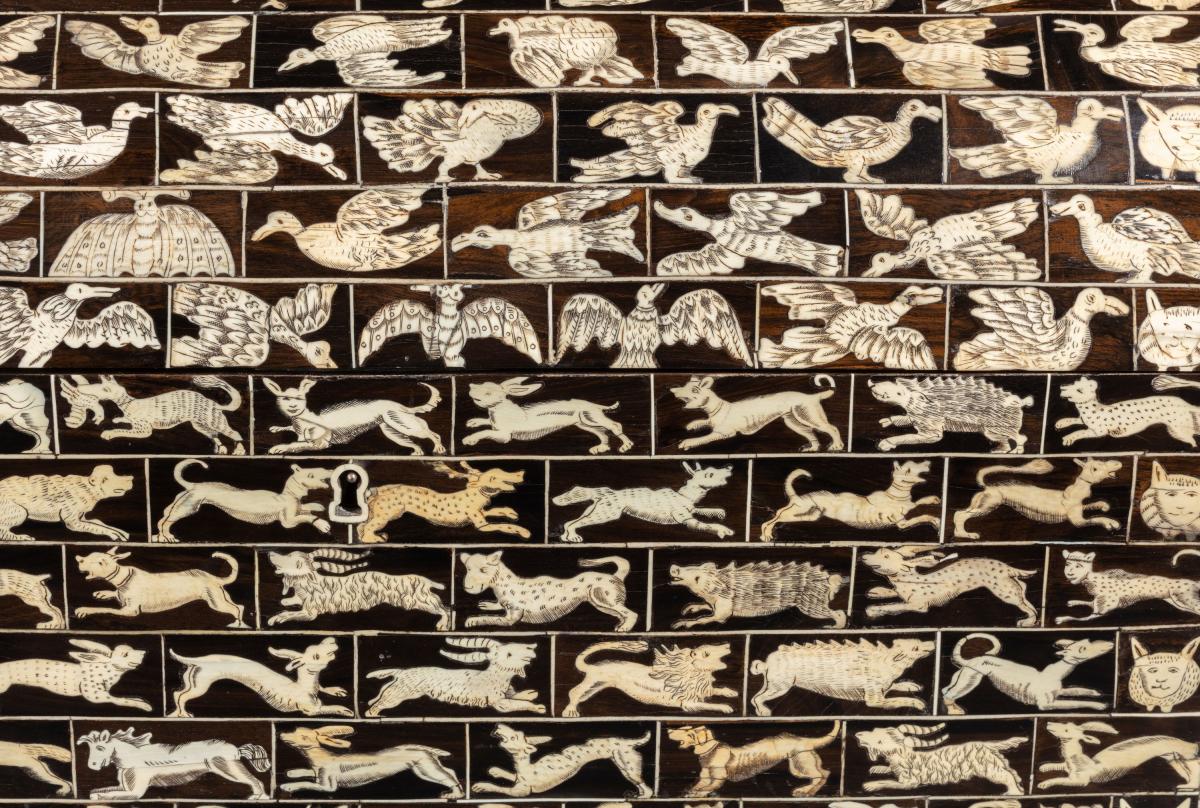
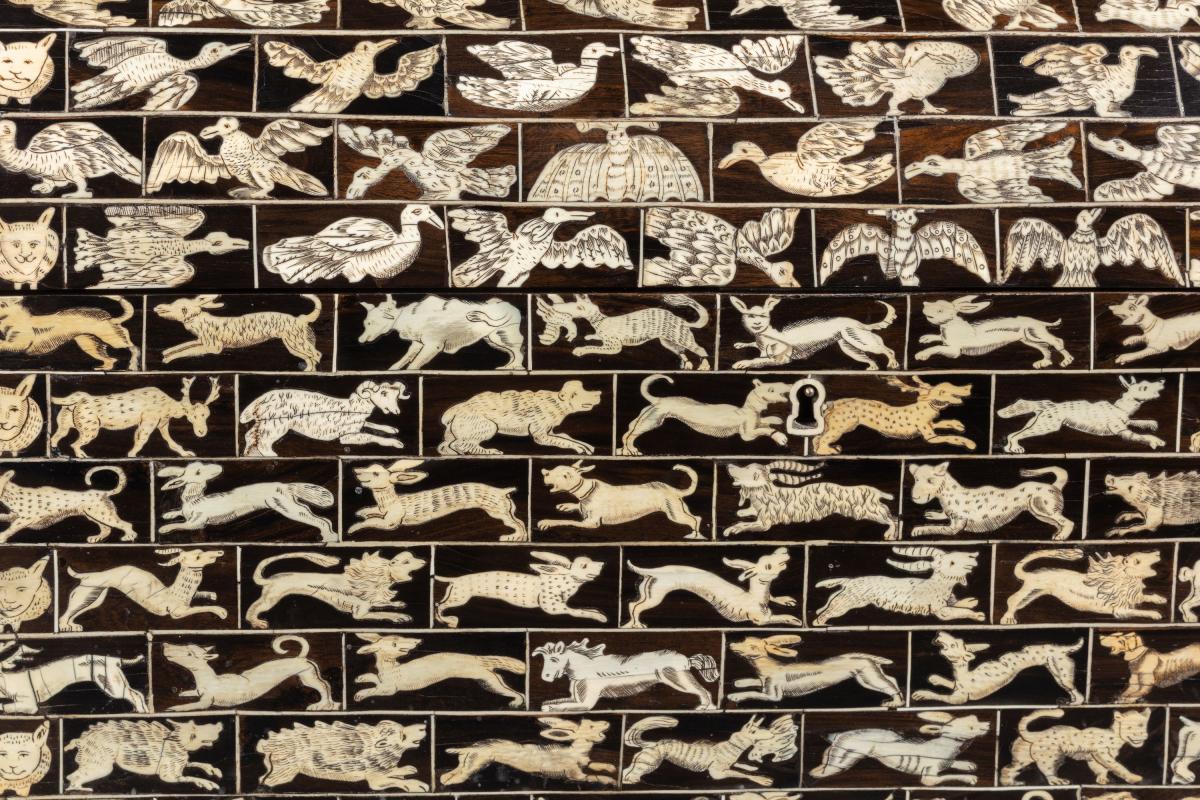
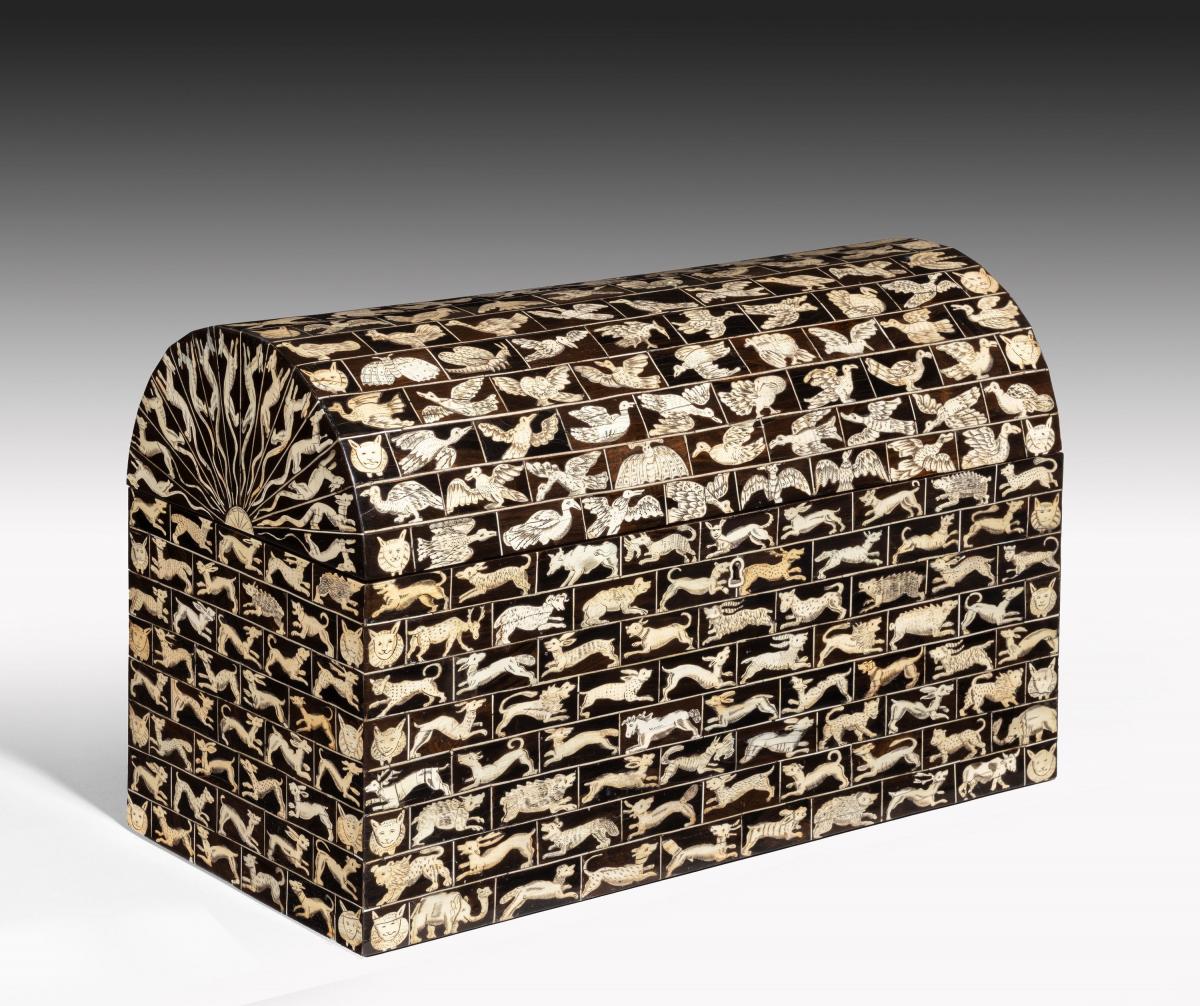
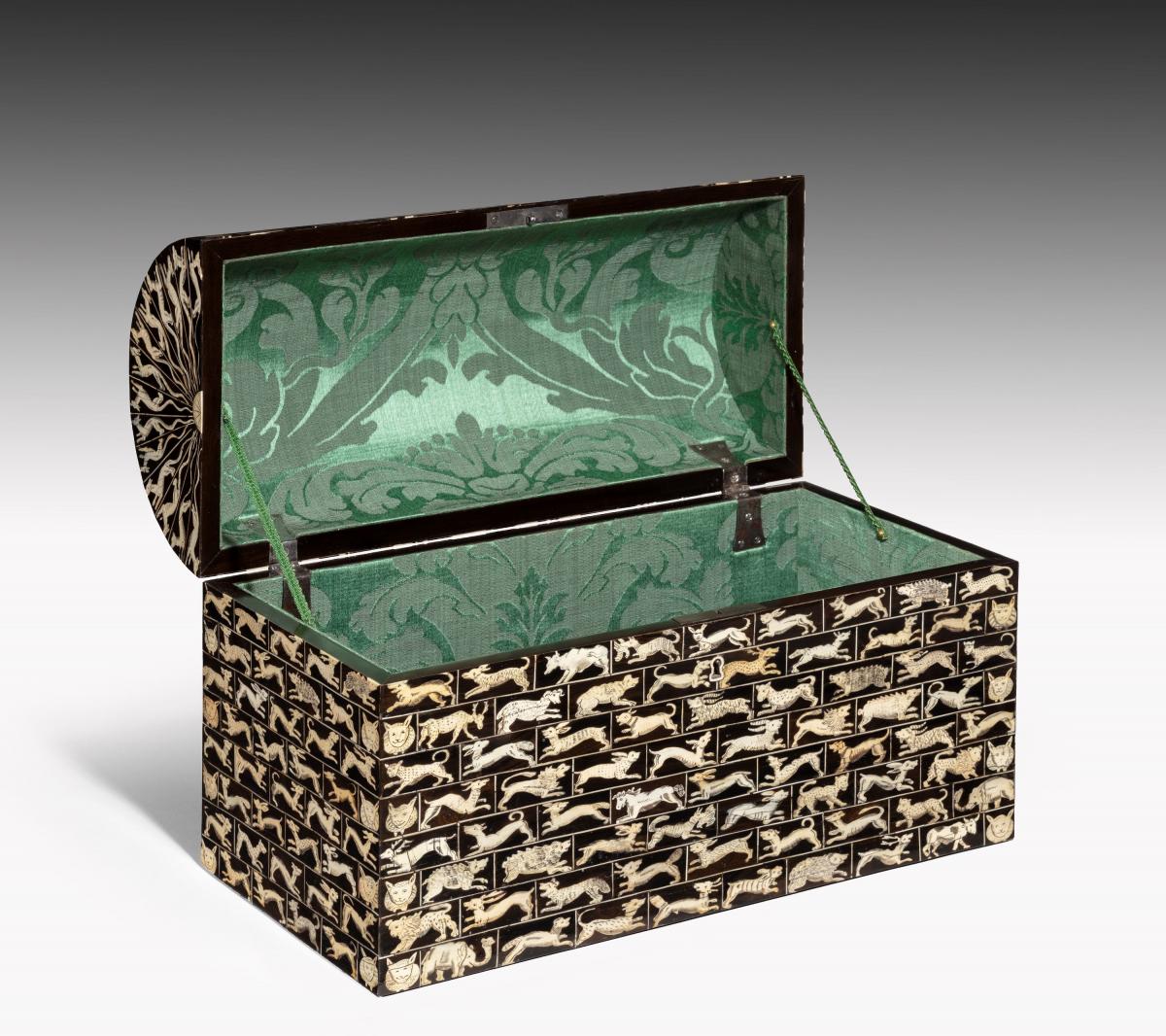
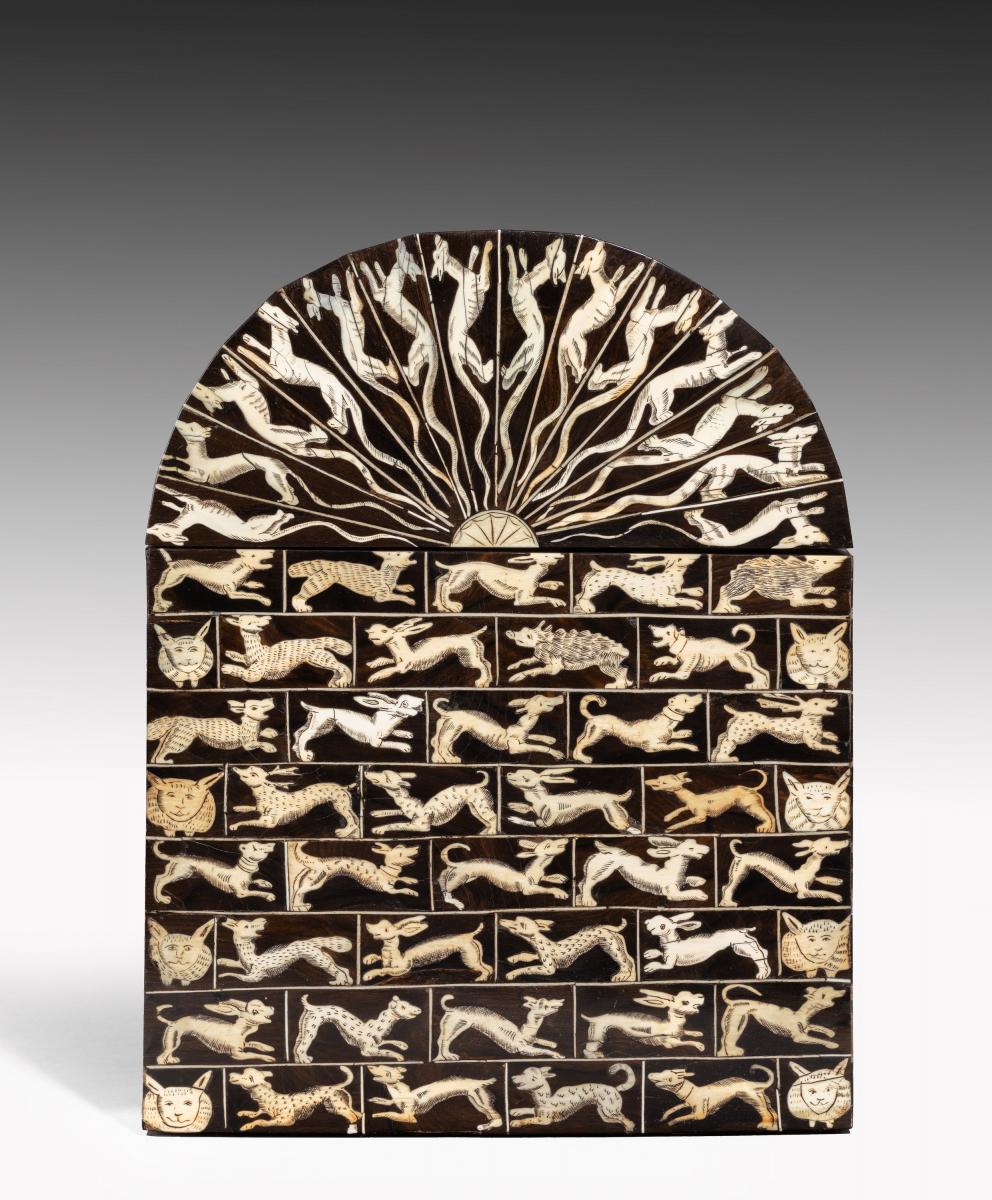
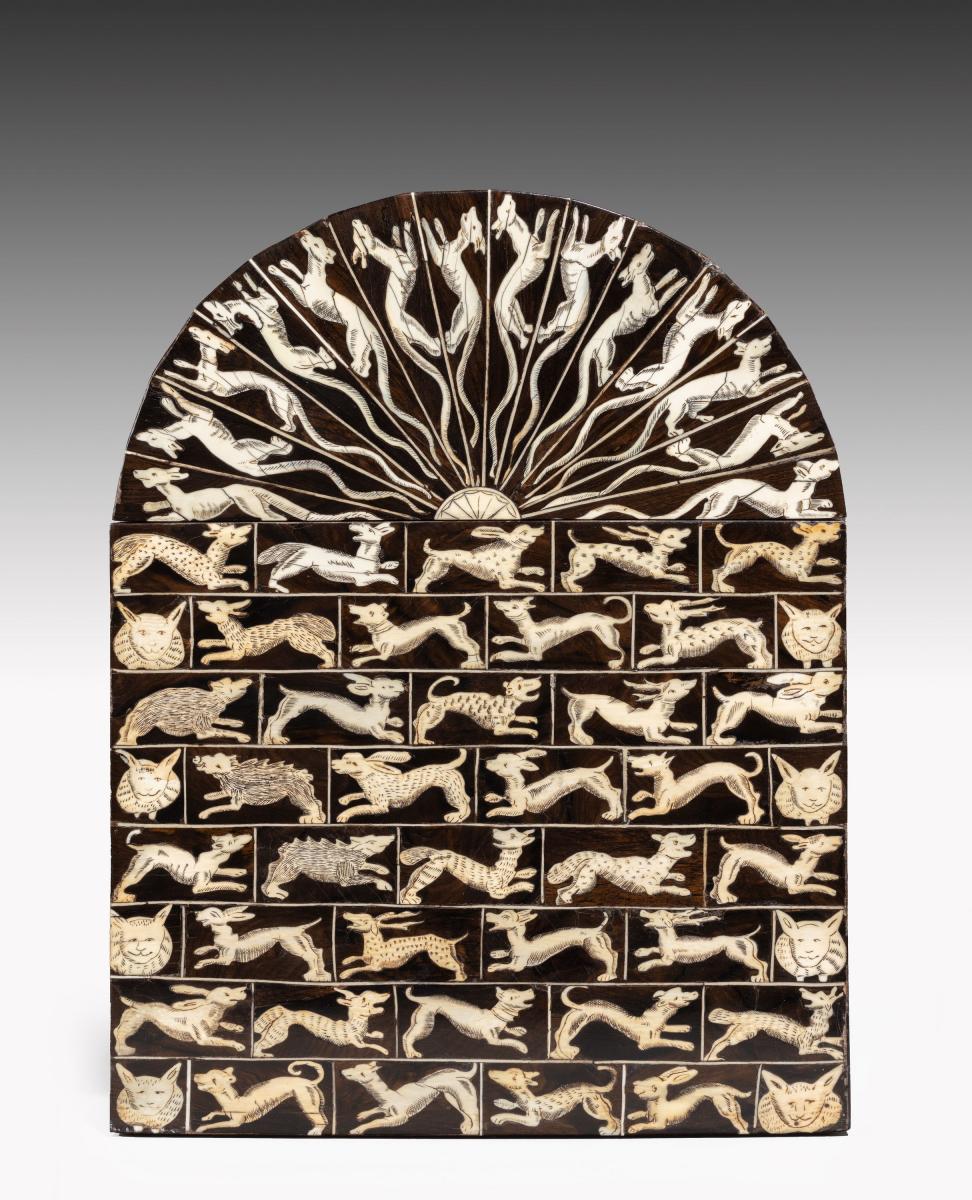
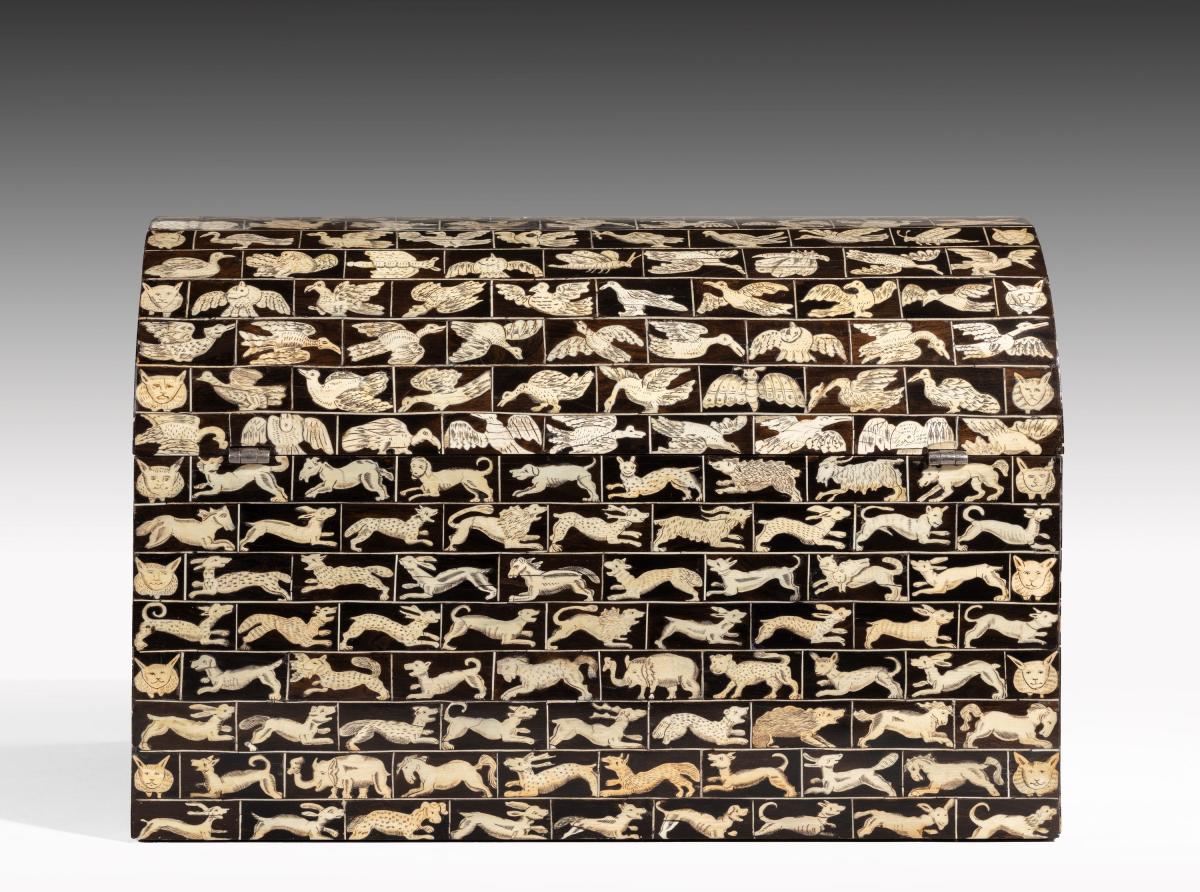
Price on application
This object includes complimentary, Insured Shipping / Delivery within the UK
This object is eligible for a Certificate of BADA Provenance
The BADA Standard
- Since 1918, BADA has been the leading association for the antiques and fine art trade
- Members are elected for their knowledge, integrity and quality of stock
- Our clients are protected by BADA’s code of conduct
- Our dealers’ membership is reviewed and renewed annually
- Bada.org is a non-profit site: clients deal directly with members and they pay no hidden fees
SOUTH GERMAN – probably Augsburg, 16th Century
Provenance: Acquired from Daniel Katz Ltd. circa 2008.
Inlaid all over with small panels inset with engraved pieces of bone mounted to the radial end pieces, the back, and the sides. Decorated with ivory engraved birds on the lid; and an eclectic selection of animals including dogs, rabbits, hares, lions, leopards, deer, horses and goats on the body of the box.
Throughout the 16th Century, the cabinet-makers of Augsburg in southern Germany, where this box was probably made, began to specialise in ebony veneers (obtained from Venice or Amsterdam) and engraved bone and ivory. In 1590 there were 200 master cabinet-makers in Augsburg with their own workshops, and considerable numbers of luxury products were being made during the period 1580-1620. The cabinet-makers thrived because of the city's efficient production in luxury goods, its far-reaching trade links, and well-organised merchants, and its openness to both Protestant and Roman-Catholic clients.
Nick Humphrey, in his article ‘Printed Sources for a South German Games Board’ (V&A Online Journal, Issue No. 7 Summer 2015), discusses the decoration on a late 16th Century South German Games Board veneered with ebony and engraved bone, which is in the Victoria and Albert Museum’s collection, and has similar decoration (Museum Number 567-1899; https://collections.vam.ac.uk/item/O125688/games-board-unknown/). Humphrey’s article considers the use of prints as design sources for engraved decoration – and references the work of Virgil Solis (1514-1562), a printmaker who had a sizeable Nuremburg workshop. Humphrey states that: ‘Hunt friezes derived from Solis prints seem to be a common feature of engraved games boards, endorsing the ‘immense popularity’ of his single-sheet prints with craftsmen of the period.’ Humphrey continues: ‘The scale and design of Solis’s hunting prints – easily applicable with minimal scaling to the raised borders – must have made them especially inviting to use.’
IMPORTANT NOTE: This item has been registered as exempt from the UK Ivory Act 2018. Ivory declaration submission reference: KQQVX9CN
This object incorporates old ivory and has been registered with Defra
Dimensions
32 x 48 x 24 cmPrice on application
This object includes complimentary, Insured Shipping / Delivery within the UK
This object is eligible for a Certificate of BADA Provenance
Stock number
532aThe BADA Standard
- Since 1918, BADA has been the leading association for the antiques and fine art trade
- Members are elected for their knowledge, integrity and quality of stock
- Our clients are protected by BADA’s code of conduct
- Our dealers’ membership is reviewed and renewed annually
- Bada.org is a non-profit site: clients deal directly with members and they pay no hidden fees


